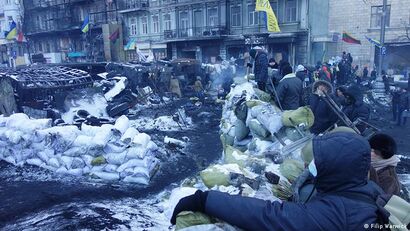Winter Revolution: Difference between revisions
No edit summary |
No edit summary |
||
| (10 intermediate revisions by the same user not shown) | |||
| Line 27: | Line 27: | ||
* [[File:ZPA.png|14px]] [[ZPA movement|ZPA]]<br> | * [[File:ZPA.png|14px]] [[ZPA movement|ZPA]]<br> | ||
* [[File:GLA.png|14px]] [[Granzerian People's Liberation Army|GPLA]]<br> | * [[File:GLA.png|14px]] [[Granzerian People's Liberation Army|GPLA]]<br> | ||
{{ | {{flagicon|Urshchenya}} [[File:Emblem of the Directorate A.svg|14px]] Alfa Detachment<br> | ||
{{flagicon|Urshchenya}} [[File:Emblema KGB.svg|14px]] UNB<br> | |||
<hr> [[File:Anarchist flag.svg|22px]] '''Anarchists'''<br> | <hr> [[File:Anarchist flag.svg|22px]] '''Anarchists'''<br> | ||
* [[File:AKHS.png|14px]] AKHS<br> | * [[File:AKHS.png|14px]] AKHS<br> | ||
|side2 = {{flagicon|Granzery}} '''Government''' <br> | |side2 = {{flagicon|Granzery}} '''Government''' <br> | ||
[[Ministry of the Interior]] | [[File:Seal of Hungary (1915-1916).svg|14px]] [[Ministry of the Interior]] | ||
*[[File:Gendarmerie_badge.png|14px]] [[National Gendarmerie]] | *[[File:Gendarmerie_badge.png|14px]] [[National Gendarmerie]] | ||
*[[File:NAVI.png|14px]] [[NAVI]] | *[[File:NAVI.png|14px]] [[NAVI]] | ||
| Line 41: | Line 40: | ||
[[File:GranzeryRen.png|22px]] [[New Renaissance Party]] | [[File:GranzeryRen.png|22px]] [[New Renaissance Party]] | ||
*[[File:Turul.png|14px]] [[Vitéz National Corps|VITNAC]] | *[[File:Turul.png|14px]] [[Vitéz National Corps|VITNAC]] | ||
** [[File:1OVNC.png|14px]] 1. OV.NC | ** [[File:1OVNC.png|14px]] 1. OV.NC <small>''Életőr Istvan Kende''</small> | ||
** [[File: | ** [[File:6OVNC.png|14px]] 2. OV.NC <small>''Reneszánsz Őrök''</small> | ||
** [[File: | ** [[File:OVNCGRANEM.png|14px]] 3. OV.NC <small>''GRANEM''</small> | ||
** [[File:1 | ** [[File:93 ОМБр 1.png|14px]] 4. OV.Nk <small>''Såksesch Gruppe''</small> | ||
*[[File: | ** [[File:OVNCJoska.png|14px]] 8. OV.NC <small>''Viktor Szombathy''</small> | ||
*Various other Paramilitary Organizations | *Various other Paramilitary Organizations | ||
|leadfigures1 = {{plainlist| | |leadfigures1 = {{plainlist| | ||
*[[Aliz Horvath]] {{KIA}} | *[[Aliz Horvath]] {{KIA}} | ||
Latest revision as of 09:37, 29 March 2022
| 2016 Granzerian Revolution | |||
|---|---|---|---|
| Part of the East Granzerian Insurgency | |||
 Clashes in Győr-Ibrany. | |||
| Date | 3 December 2016–17 January 2017 (1 month and 2 weeks) | ||
| Location | Granzery | ||
| Goals |
| ||
| Methods |
| ||
| Resulted in | New Renaissance Party victory | ||
| Parties to the civil conflict | |||
| |||
| Lead figures | |||
| Number | |||
| |||
| Casualties and losses | |||
| |||
The 2016 Granzerian revolution, also known as the Winter revolution, Christmas Revolution or the Bloody Winter, took place in Granzery from the 3rd of December 2016 to the 17 of January the following year, when a series of violent events involving protesters, riot police, and eventually military action in the capital, Győr-Ibrany, culminated in a series of clashes between anti-government protestors and police, culminating in a brief civil conflict between members of various antifascist paramilitary groups, elements of the Granzerian Army, internal security forces and various pro-government paramilitary forces.
Overview
The 2016 Granzerian elections held in November were widely accused of being one-sided and corrupt, with no real opposition to the Granzerian Vezér Karoly Taksony or the ruling New Renaissance Party. Anti-government protests erupted across the country as New Renaissance member Istvan Kecel was sworn in as Prime Minister despite broad unpopularity and accusations of corruption and incompetence.
On the 3rd of December, the Granzerian government declared a national state of emergency and national curfew. In response some 10,000 protesters advanced on the National Diet building where the New Renaissance Party was temporarily governing the nation in support of ousting the Vezér of Granzery and Vezekabinet. National Gendarmerie blocked their path and the confrontation turned violent. Gendarmerie opened fire upon protestors initially using rubber bullets (but began using live ammunition when armed protestors began throwing rocks and molotov cocktails at police.) Protestors, who were not armed at this point, retreated from the Royal Diet siege after an estimated 4 law enforcement and over 60 protestors were killed.
Later on the evening of December 13, clashes between protestors, law enforcement, and paramilitary groups began to spread to other areas of Granzery, including mostly the second most populous city of Csongrad. While these clashes did not see the same international attention as the clashes in Győr-Ibrany, it is estimated at least 100 people were killed in clashes outside of the capital, including 30 killed as Zsukrán Provincial Army militants attacked government buildings in the east of the country.
On December 14 the Granzerian Vezer instituted a total media blackout on the situation in Granzery as disloyal elements of the Granzerian Military announced entered the capital seeking to overthrow the Vezér. Local police and gendarmerie clashed with military forces but were not equipped to combat the armoured vehicles of the military forces, at around 4pm on the 14th elements of the 15th Mechanized Regiment seized the Capital complex adjacent to the river, however the Vezér and Vezekabinet fled earlier that day, leaving the site largely unstaffed. Granzerian paramilitary forces belonging to the Vitéz National Corps assembled in the capital starting at 9pm on the 14th, preparing to assault the capital complex and apprehend or destroy the disloyal military elements.
During the conflict over the capital, chaos continued in the streets of Granzery, with local police and paramilitary beginning to mass apprehend protestors and involved the regular use of live ammunition on crowds found outside of home past curfew.
Three days later a force comprised of the Vitéz division "Életőr Karoly Taksony", Internal Security Troops and Granzerian National Army 8th Motorized Regiment assaulted the capital complex, initial assaults were repulsed by the dugin constitutionalist forces, heavily damaging the historic Parliament House. However by the 22nd of December most or all of the 15th Mechanized had surrendered to loyalist forces, most of which were tried and convicted of treason, with the last being sentences and executed on the 2nd of July of 2018.
On the 1st of January the New Renaissance Party returned to the Granzerian Parliament House and while clashes continued between protestors and state forces, the last major bastion of resistance in the capital was crushed with the defeat of constitutionalist forces and by the 17th of January the conflict was considered over and thousands lay dead and tens of thousands remained behind bars.